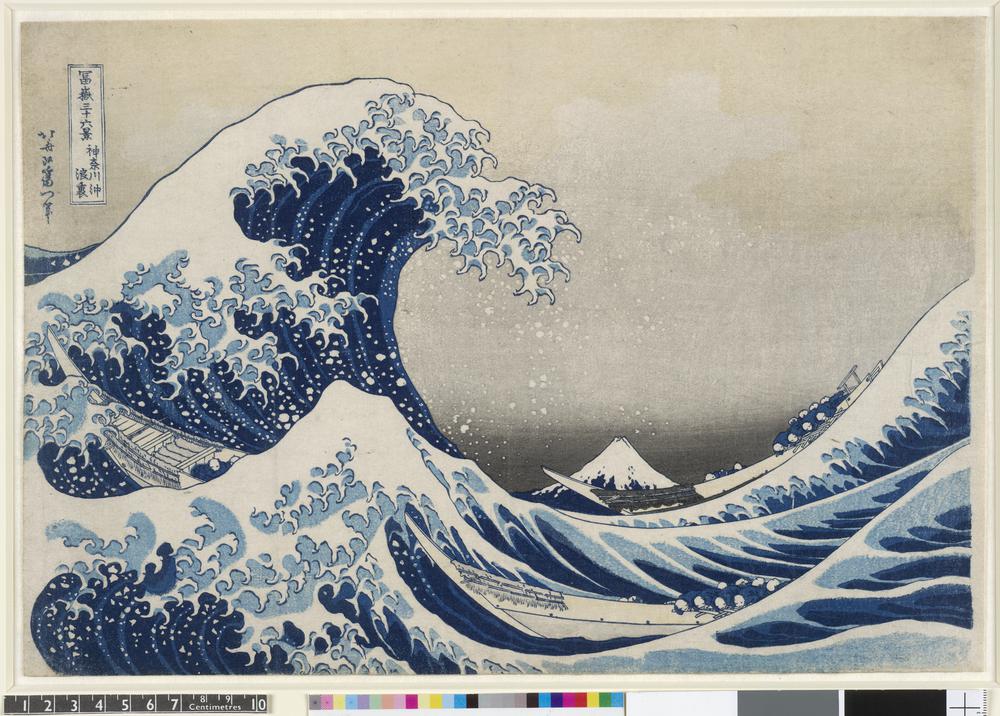
The Great Wave off Kanagawa is a woodblock print that was made by Japanese ukiyo-e artist Hokusai, probably in late 1831 during the Edo period of Japanese history. The print depicts three boats moving through a storm-tossed sea with a large wave forming a spiral in the centre and Mount Fuji visible in the background.
The breathtaking composition of this woodblock print, said to have inspired Debussy’s La Mer (The Sea) and Rilke’s Der Berg (The Mountain), ensures its reputation as an icon of world art. Hokusai cleverly played with perspective to make Japan’s grandest mountain appear as a small triangular mound within the hollow of the cresting wave. The artist became famous for his landscapes created using a palette of indigo and imported Prussian blue.
What is The Great Wave off Kanagawa meaning?
The large waves, about to crush the fishermen in their boats clinging to their oars, appear larger than the mountain. Hokusai may have wished to depict a fear of and respect for the ocean with this play on perspective. Mount Fuji holds religious/sacred significance in Japan.
Where is The Great Wave off Kanagawa displayed 2022?
Open until the end of January 2022, the British Museum are exhibiting a collection of rare drawings by Katsushika Hokusai – one of Japan’s most celebrated artists, best known for his iconic print, Under the Wave off Kanagawa, popularly called The Great Wave